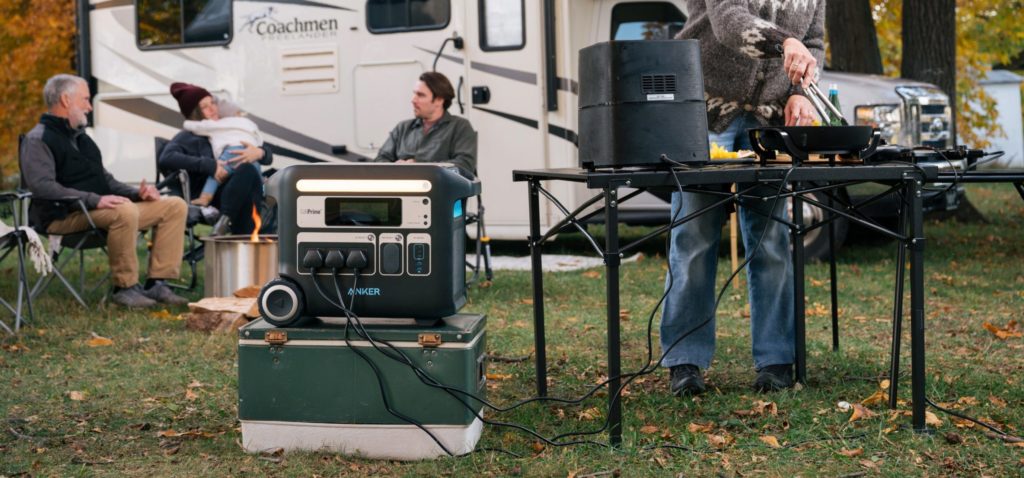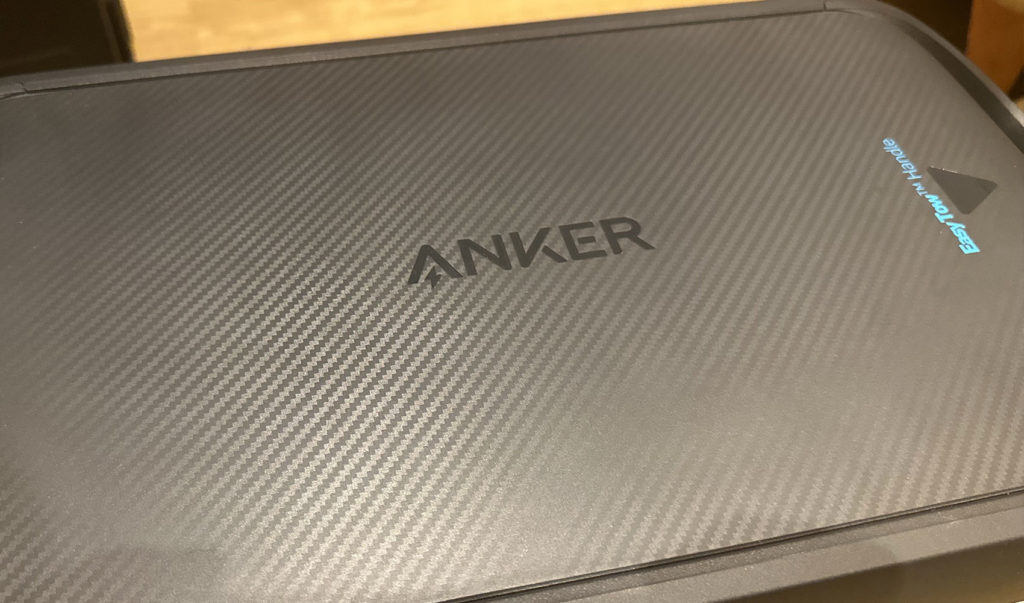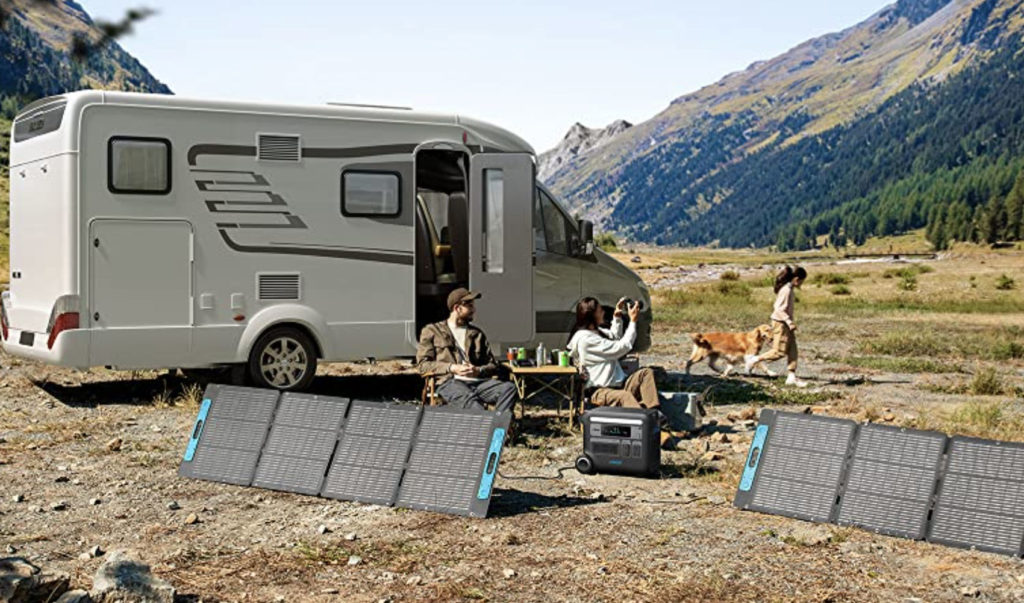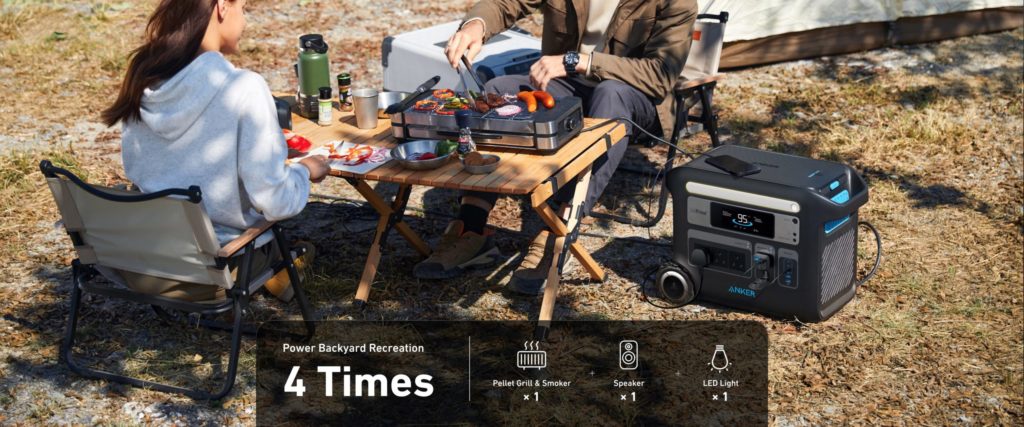I’ve wanted a large portable battery for several years, primarily as I’m a bit of a prepper (someone that plans for worst-case scenarios), but also because we enjoy camping, remote road trips, helping to run outdoor events, and I’m not too fond of the smell of a petrol generator. Until fairly recently, all of the batteries out there have been underpowered, ridiculously sized and/or using old technology.
Then came along both the EcoFlow Delta and the Anker 767 Powerhouse; these two products have changed the portable battery scene because of one major technology difference, LiFePO4 (LFP) battery cells, a technology that Tesla has used in some of their range of vehicles with the one major benefit over Li-ion cells being they last a lot longer (an estimated 6x) which means they both offer vastly superior warranties and lifetimes compared to other technologies.
Disclosure: Anker kindly offered me a unit to test, but as always, I’ll give my unbiased review below. 3rd party links on this page generate an income if you were to click and then go on to purchase, this doesn’t affect the price you pay.

Let’s start with the negatives:
- I want to be able to charge the 767 Powerhouse using cheap overnight energy as a full charge would costs me just £0.15 Vs £0.78 if I were to charge it outside these hours, sure there isn’t that much in it but I’d still prefer to pay less longterm this would add up, I don’t feel comfortable putting that much power through a smart plug so I’ve suggested to Anker they have a ‘time of use’ tariff setting/scheduler added to the software (similar to how electric cars allow you to charge overnight).
- The app uses Bluetooth, which is OK, and I suspect for most people, it will be more than adequate, but I love to watch how much solar energy I’m producing so having Wifi/3G connectivity would have been a real positive for me, it would also make charging it when no solar is available but you’re away from home easier (e.g. if you left it charging at a shop/restaurant)
- Secondly, the Bluetooth seems to require you to reconnect by physically pressing the button on the machine each time which makes it slightly pointless given you can control the ports or see the screen of the machine when you’re that close.

- The lack of security features, this thing costs £2400, and it’s on wheels, if someone were to see it and understand it’s value it could easily be pinched, I’d like to see some additional security measures (e.g. GPS, an alarm similar to how my robot mower gets an alarm off if it’s picked up without being ‘unlocked’ etc, the ability to remotely disable/track the device).
- It’s a beast (as you would expect from 2kWh of portable battery); you need the wheels and handle to move this thing around easily; when I stupidly ignored the manual’s advice and lifted this myself out of the box, I actually hurt my back 🤦♂️ Once it’s out of the box though it’s chunky but not unmanageable for one person.
- Out of the box, it won’t charge my Tesla; it seems I need an additional bit of kit, which so far is only available in the US, of course, there is little point in charging a Tesla via the 767 Powerhouse but of course, I wanted to try it and it could potentially be useful as a ‘jerry can’ style emergency for a friend that gets caught short (in reality I doubt I’ll ever seriously use it to charge an EV).

Now the positives:
- The 767 Powerhouse charges from the grid ridiculously quickly (2.2kW) meaning a 0-80% charge happens in just 1 hour from AC power.
- The in-built ‘Time Remaining’ feature is so brilliant, whilst it takes a few seconds to calculate, this gives you a very precise and idiot-friendly (myself included) indication of how much energy you have and how much you’re currently drawing.
- The LiFePO4 battery technology puts this and the EcoFlow Delta 2 in a league of their own, I wouldn’t buy any other large battery system without this technology, the warranty (5 years) and expected lifetime (10 years / 3,000 cycles) makes these a no-brainer decision compared to other similar but older batteries.
- It’s built well with high-quality materials (even a sexy bit of a black carbon fibre on top), with plenty of thought going into the structure, layout, size etc

- It can push out up to 2300w (2.3kW) of power to various devices and whilst the fans are quick to turn on it’s not excessively loud.
- Whilst I’ve only had the 767 a few weeks and we’ve not had solar panels attached, it can accept up to 1kW in solar power, and whilst I’m not expecting many will travel with that many (albeit foldable) panels, it’s great to have that option and if someone has a van conversion it will be a no brainer to fit solar panels and connect up to this.
- It’s a UPS (uninterruptible power supply) from standard out of the box with a very low 20ms switchover time), if you have critical electricals that need to remain online (think CPAP machine, 3D printer, servers etc), this device could replace a lot of features that say a Tesla Powerwall 2 (with backup gateway) offers.

- You can double the capacity of this unit up to a massive 4kWh pack with an additional Anker 760 battery which uses the same LFP battery chemistry for optimal long life and performance but requires the brain of the Anker 767 Powerhouse to control/manage the additional power.
- The 767 comes with 100W USB-C so ideal if you have a USB-C powered laptop, it can also power devices via 3 x UK 3 pin plugs, 2 x 12V lighter sockets or the 2 USB-A 18W sockets.
- At first, I thought the built-in light was a gimmick, but it’s quite helpful and I’d imagine it would be even more useful when camping.
Buy the Anker 767 Powerhouse Direct (UK) or from Amazon (UK)

Conclusion:
The Anker 767 Powerhouse is the Tesla of portable batteries, meaning it’s both easy to use and fast to charge whilst also offering the best bang for your buck when you factor in all the positives and with a warranty that’s solid + is backed by a company with many years of experience creating high-quality products you cannot go wrong, sure there are cheaper products on the market available but they don’t come close in features or spec (excluding the very superb albeit much smaller EcoFlow Delta 2).
Owning this is a no-brainer if you:
- Can afford it
- Want a large battery that is still portable
- Need the UPS benefits
- Want something that will do everything (including cooking)
- Can get by with the albeit fairly small list of negatives
Side-by-Side Stats Comparison with the EcoFlow Delta 2 and Anker 767 Powerhouse
You may also find my full side-by-side comparison of the EcoFlow Delta 2 and the Anker 767 Powerhouse of interest, especially if you don’t need the capacity and charging capabilities of the Anker 767, here are the side-by-side specs:
